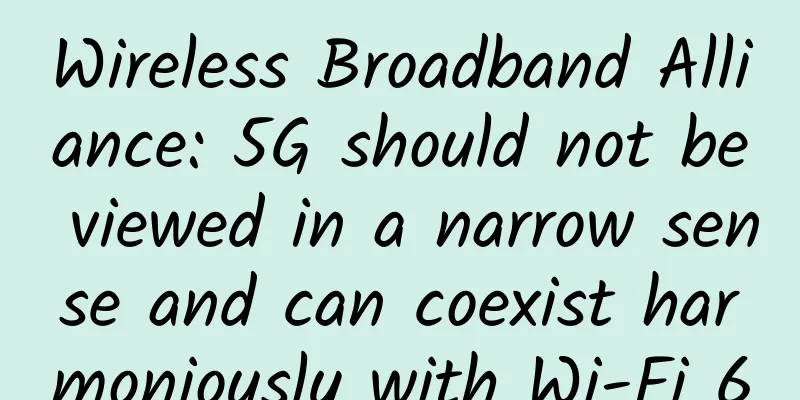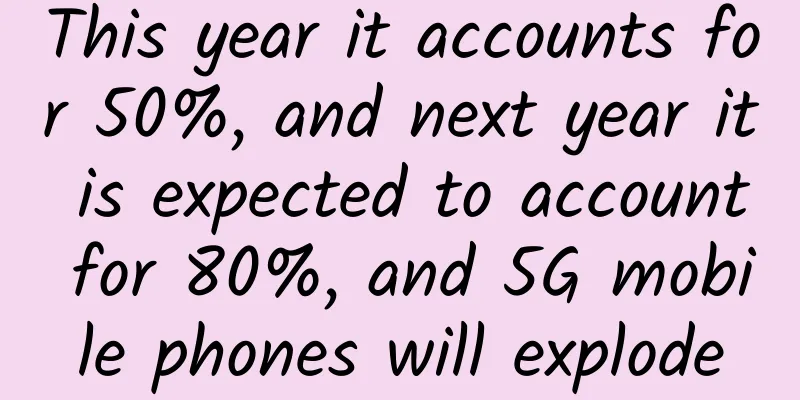How to prevent 5G from creating a new digital divide

|
There is no doubt that more pervasive 5G technology is becoming a reality. Major analyst firms such as Gartner, CCS Insight and Counterpoint all predict that 5G devices will account for around a third of smartphone shipments by 2021. The unifying factor behind these forecasts, which are expected to be 30-35%, is more aggressive consumer price points, which the phone manufacturers themselves are keen to promote in order to recover from the black swan event of 2020. Virtual CES 2021 set the tone for this, with many 5G smartphone launches such as the Motorola One 5G Acce and TCL 20 5G focusing on "low-cost" bands. Coupled with Qualcomm's announcement of its new Snapdragon 480 processor, which has the potential to enable 5G devices as low as $150, industry commentators also believe that this is the year low-cost 5G devices will really start to gain traction. However, affordability is a subjective factor, and with 5G devices currently priced over $300, 5G access will vary greatly depending on the market.
Covid-19 ImpactCovid-19 has exposed the inequalities in access to technology around the world. Vast differences in global communications infrastructure have become apparent, as has the gap between countries ahead of the 5G rollout curve and those that have yet to achieve universal 4G access. When we combine these global disparities with the real economic consequences of the pandemic and ongoing geopolitical instability, it’s worth considering whether these devices will actually penetrate the market as their proponents suggest – certainly within the predicted timeframe. The year 2020 will long be remembered in the tech world for compressing a five-year global digital transformation into just 12 chaotic months. For families around the world, online access to everyday resources such as education, finance, and healthcare has gone from being a convenience to an absolute mission, essential. With mobile broadband access surpassing fixed lines in many countries, high-speed internet access is no longer a “nice to have.” It has become a lifeline for hundreds of millions of people working or schooling from home, maintaining social connections, and many other reasons. Nor will it be possible to revert our newly altered lives to their pre-Covid-19 state once the pandemic is over. We are opening up new digital frontiers, and 5G promises to further transform the way we live and work. The problem here is that countries that lack fixed broadband are often the ones that stand to benefit the most from 5G access. With affordable 5G devices often needed in countries with the least affordability, we are in real danger of exacerbating the current unacceptable digital divide. Global access issuesOn a positive note, internet access is improving globally, although not fast enough for most people. Findings from the United Nations and the International Telecommunication Union show that the percentage of the world’s population with internet access has grown significantly over the past 15 years, from around 17% to over 50%. The problem, however, is that some inequalities still exist between different regions. For example, in Europe, the percentage of internet users is over 80%, but in Africa, that figure drops to less than 30%. In addition, there is a clear gender imbalance in access to services within many countries and between different socioeconomic groups. This is true in all countries, whether low- or middle-income or developed. Furthermore, it is widely acknowledged that the accessibility of internet access, as well as broadband speeds, are directly correlated to GDP. This is why many governments around the world invest in and prioritize high-speed broadband. However, for countries with large populations living in remote or rural areas, building high-speed fixed-line broadband infrastructure is challenging, so they rely on mobile internet to achieve the same goal. In this context, the transformative power of 5G is even more evident, and the importance of making 5G devices accessible is even more important. When it comes to affordability, we need to make 5G accessible to all, not just the wealthy, so that everyone can benefit. If the upfront cost of 5G mobile devices remains a barrier in these markets for some time, we need to turn our attention to alternatives, such as smart financing and credit tools designed specifically for the unbanked who have never experienced credit. The cost of managing delinquent bills and credit risk costs the telecom industry $14 billion a year. In addition, the growing value of smartphones means they are targets for fraud and supply chain theft – the latter of which costs the industry an estimated $3.5 billion a year. Both of these issues are growing concerns and are issues we must address as an industry. Solving this problem with better financingAs mentioned earlier, one way to increase the affordability of equipment is to empower operators to provide easier financing arrangements through smart financing and credit tools. By lowering the risk threshold for equipment financing and providing credit solutions for the first time in some markets, low-income people can also benefit from the power of 5G. Mobile operators are able to increase digital business revenues and provide new services to customers without increasing business risks. For example, using a device financing platform on a “per smartphone basis”, operators can choose to set payment reminders for customers and provide control mechanisms to remotely restrict or lock customers’ smartphones if they fail to pay outstanding balances, which can help reduce mobile bill payment delinquency rates, which are around 15% globally and can be as high as 40% in some markets. In the wake of the pandemic, governments and regulators in some markets have banned the use of blunt instruments of discontinuing mobile service for non-payment, with reputational impact also playing a role. However, the net result is increased pressure on operators to be profitable. A balance must therefore be struck between supporting customers through difficult financial times and protecting revenue. Device financing and revenue protection are sensitive ways to support operators in reducing overall customer risk. They are able to onboard more new consumers while retaining existing customers to ensure that all have access to 5G devices as well as 5G services. Traditional credit ratings are a straightforward tool that is now a very outdated means of reaching consumers around the world seeking a new device – many of these customers may have no credit history to speak of, or may be finding themselves in financial distress for the first time. We also need to help those who would never be considered financially and high risk. Phone manufacturers will seek to sell devices and meet their targets, while mobile operators must balance this business risk from a cost perspective. However, by increasing control over devices and broadening access to financing, both can achieve their goals and importantly, all consumers will benefit from 5G access. Make stealing a thing of the pastIn addition to making devices cheaper, mobile operators need to further protect consumers and the smartphones they carry by making the devices less easy to steal and easier to reuse. Operators must adopt technology that can completely lock the device, rendering it unusable and reducing its resale value, no matter where in the world the smartphone is stolen (including countries that do not use IMEI blacklists). Equal digital opportunities for allWith 2021 being hailed as the year 5G goes mainstream, and a slew of product announcements on the horizon, rapid 5G adoption is imminent. But in an industry often accused of widening gaps in our society, wouldn’t it be great if we could seize the opportunity to level the playing field and give everyone access to 5G devices, regardless of their status in society or the money in the bank? |
<<: The development trend of deception defense from the perspective of new honeypot technology
>>: Universal crawler techniques: How to properly remove invalid parameters from URLs
Recommend
This article will help you understand the difference between fog computing and edge computing!
1. What is the difference between fog computing a...
The new THE PLAN v2 from BandwagonHost, quarterly payment starts from $32.6, available in Japan/Hong Kong/US CN2 GIA, etc.
BandwagonHost has launched a special package call...
A Brief Analysis of Data Flow Technology in Data Centers
What is the most valuable thing in a data center?...
80VPS: Los Angeles 8C cluster server 1000 yuan/month-E3-1240v5/16GB/1TB SSD/100TB@1Gbps bandwidth
80VPS is offering a promotion for cluster servers...
Detailed explanation of the differences between IPv6 and IPv4!
IPv6 is the abbreviation of Internet Protocol Ver...
Have you ever thought about why TCP needs to handshake before sending data?
When I look at computer networks, there is always...
Enterprise 5G: A guide to planning, architecture and benefits
Enterprise 5G deployments require extensive plann...
[11.11]80VPS: 50% off all VPS, special VPS annual payment starting from 199 yuan, multiple data centers in Hong Kong/US/Japan/Korea, etc.
80VPS also launched a promotion during the Double...
Improve efficiency Essential tools on Mac
[[396744]] There are many useful software on Mac,...
Hostwinds: VPS/cloud server from $4.99/month, Seattle/Dallas/Netherlands data center, supports Alipay
Hostwinds is a long-established foreign hosting c...
Analysis: Advantages and limitations of wireless data centers
For data center operators, the idea of a wirele...
【WOT2018】Recommended search venue reveals the secrets and discusses how intelligent search can improve business value
[51CTO.com original article] In 2018, artificial ...
4G has not been retired yet, but the global 5G network speed has begun to shrink: down by 39%. What do you think?
Have you used 5G? How does the network speed feel...
A heated debate among various parties: How far are we from a 5G hit?
[Original article from 51CTO.com] Remember that t...









